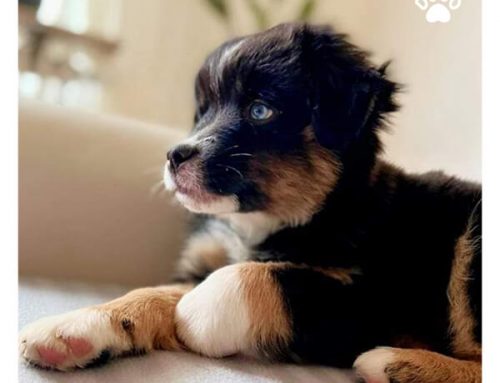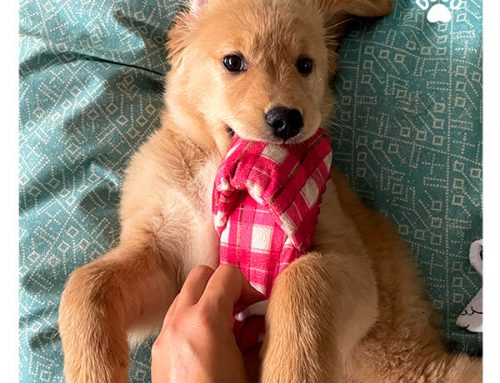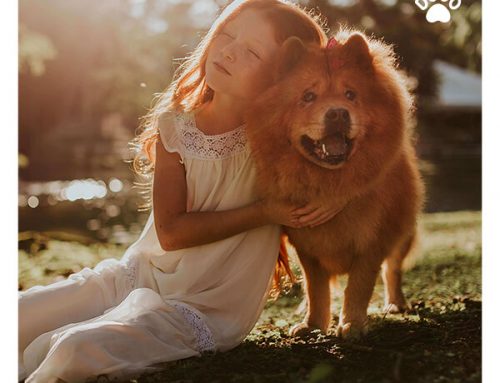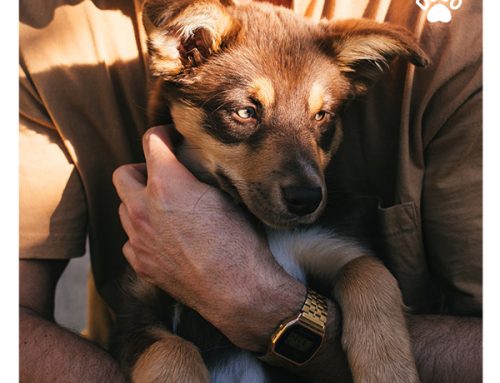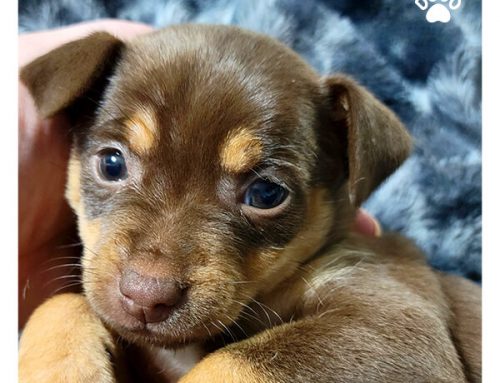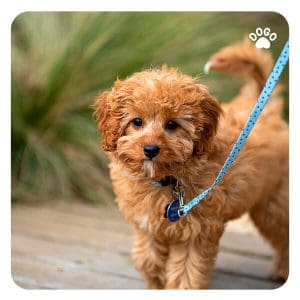
You can also read this article in Dogo App.
- A general rule of thumb is a puppy of 1 month needs to go outside once an hour, 2 months – every 2 hours, etc. Your dog should not be left alone for longer than six hours without a potty break. It is important to note that the frequency of potty breaks also depends on the breed and size of the dog. Smaller breeds tend to have smaller bladders and may need more frequent breaks, while larger breeds may be able to hold their bladder longer. Additionally, if your dog is drinking more water than usual or has a medical condition that affects their bladder control, they may need more frequent breaks. It is always a good idea to consult with your veterinarian to determine the best potty schedule for your furry friend.
- Take the dog outside 15 to 30 minutes after eating, or immediately the dog wakes up, or after an intensive playtime.
- Once you are outside, concentrate on the job. Keep the dog on a short lead. Do not play with them until your dog is done. Allow sniffing as it plays an important role in the ritual of dog house training. After your pet is done, reward with time outside to explore.
- If your dog is too excited to be outside and cannot concentrate, pace on a short lead back and forth. This will speed up the process.
- If your dog looks scared, choose a less frequently visited, quiet spot to do the deed. Try using positive reinforcement techniques such as providing treats or verbal praise to help them feel more comfortable. You can also try to make the potty area more appealing by adding some toys or a comfortable mat. It is also important to make sure that the potty area is clean and free of any unpleasant smells, as this can also make your dog feel uneasy.
- Once the puppy is done, praise and be very proud of the deed. Being positive and encouraging will speed up the dog house training.
- If the dog is outside off the leash, stand still and do not interact with your dog until the job is done.
- At home, watch for signs that indicate the puppy is searching for a place to urinate. Pacing, whining, sniffing could be some of the indicators.
- If your pup starts to leak once you lift him/her, place a cloth in the genital area. This will stimulate inhibition.
- If you have an older dog who is already house trained, take him/her on walks. Puppies learn quicker by copying other’s behavior.
Puppy Pads or No Pads?
Teaching your dog to eliminate on paper or in a litter box can make housebreaking hard. Between 7.5 and 8.5 weeks, puppies develop a substrate preference, i.e., they learn to pee or poop on a specific material or surface and seek it later in life. If you want your dog to do their business only outside, it is strongly advised to get the dog used to the outside environment.
Cannot take my dog regularly out
We understand that being at home all the time is not always possible. If your dog has to stay alone, then the dedicated spot should be far from the food bowl. Most dogs will not pee at the same place where they eat. A preferred location is close to the doors. The methodology is the same as described above when bringing the dog outside. If your dog has problems finding the right spot, place a sponge soaked in urine or pieces of drops on the preferred area.
If your doggy stays in a dog pen when you are away, make sure that it is big enough so that a bed, food, water bowls, toys, and litter box fits. You should place the litter box as far away from the bowls as possible. A crate is not suitable for longer confinements.
It is not advised to let the dog run freely, unsupervised at home until they are housetrained. Please remove all carpets and other material that soaks in liquids and smells from the house for the time being.
Monitoring at home
Every successful toilet break outside is a point towards successful housetraining, and every accident at home is a few points back. Nevertheless, patience is needed, and it is an exception to have a housebroken dog until they reach 4 months of age.
What can you do to improve your success?
- Crate your dog for the night and place the crate next to your bed, so they can inform you when it is time to go.
- During the day, when you have to leave your dog, restrict your dog to an easy-to-clean surface, e.g., kitchen.
- When at home, monitor your dog. Either have your dog always in your room and watch them with one eye. You can also place a bell on your dog when you need to focus, so every time you hear a bell, you will know your dog is walking around and might need a toilet break.
- Do not allow free range around the house. There is no chance you can supervise your dog, and it could also be that you do not notice if and where your dog went.
- Others offer to attach the dog to your waist belt. However, we feel this could lead to other problems like not learning how to be alone, so we advise against it. In case you are busy, put your dog in a pen with a chew toy.
- In addition to positive reinforcement, consistency is key when it comes to potty training. Make sure to establish a routine for potty breaks, and stick to it as closely as possible. This will help your dog learn when it is time to go outside and what is expected of them.
Punishment
Punishment of the puppy for him/her eliminating in a wrong spot is counterproductive. Suppose you do not catch the dog on the spot and scold him even a minute after. The puppy will not understand why he/she gets punished. Your rude behavior can make your dog scared of you and even trigger fear, submission urination. However, if you catch the moment your puppy squats, give a negative cue to startle your dog, e.g., NO, Ouch, clap your hands, or make a loud step. If the dog stops peeing, pick him/her up, hold a cloth under the belly and quickly bring him/her outside and praise for doing it in the right spot.
Usually, dogs are entirely house trained for 7 months. Small breed dogs and females may take slightly longer to do their needs outside. However, if your dog is older than 7 months, you should look for other reasons, medical or behavioral, why he or she still accidentally pees or poops at home.
Create a Personalized Training Plan for your Dog


